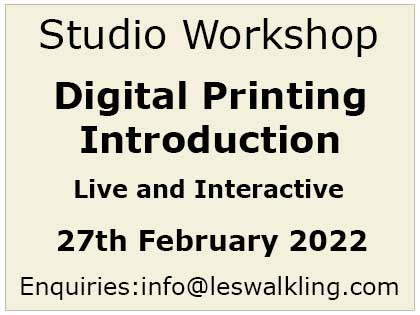 Les Walkling, Falling Skies, 2011, Pigment Print, 127 x 170cm
Les Walkling, Falling Skies, 2011, Pigment Print, 127 x 170cm
A young artist recently contacted me after reading my paper Pixel Perfect: The Craft of Photography in the Age of Digital Reproduction. Her concern was that while digital processes were becoming increasingly central to her work, and though the outcome was visually satisfying, the ease of the process itself left her ‘feeling slightly fraudulent as an artist’. Even worse, she suspected that the viewer could also ‘sense her fraudulence’.
This feeling of inadequacy is not uncommon in an age where we are first inclined to blame ourselves. In the end it is the content of the work that determines its place in our world, and that is a combination of what we do, why we do it, and how it is done. The production process is critical but no more or less than any other feature. When process dominates it becomes the main content of the work. When process retreats, other content less physical or material and more metaphysical must be added to balance the work. Some works are a much greater labour of the mind, while other works result from sheer physical labour. There is no right or wrong, no better or lesser, just what makes sense to us at the time.
What particular accomplishments or qualities we are credited with depends on our definition of art, and the role that craft plays in that definition. This can be quite personal, and we shouldn’t underestimate the contested role guilt plays in our understanding of the world and our place in it. We also aren’t the same today as yesterday or tomorrow. So it comes down to what we feel comfortable doing at the time, and what we give ourselves permission to do, even if that is being concerned over work coming too easily. We really have to own our convictions at this time. It seems to no longer be adequate to merely be convincing.
Doubt also grows out of pessimism, advertising and bad luck. Learning to be patient with ourselves and our growth as an artist, and being sensitive to our needs, both real and imagined, are all part of this process. Perhaps all my friend was asking for was a deeper belief in what she was producing and its effect on her world. This faith is a confidence that artists need a lot of. It also takes time to evolve this way of being. In my early years I kept reminding myself to ‘go for the jugular’. That is, to never hold back from trying to put as much personal meaning and significance into the work as I could. I once wrote in large letters across my studio wall ‘merely decorative is never enough’. The point is to train your attention and your lens on what possesses and consumes your moments.
So digital processes are not the problem. In fact they can be wonderfully liberating by delivering what is required with less errors and less effort, thereby freeing up precious time and energy for our thinking and dreaming. Thinking is metaphysical doing. Doing is material thinking. As tricky as it can be, you just have to get the balance right between these complementary forces. Art is worth exhausting yourself over, because art remains the best game in town. History also reminds us that making truly great art is incredibly difficult, so I wouldn’t hold back. It is an informed investment.
Don’t be worried about complexity. Complexity is what keeps someone ‘standing in front of your image’ long after they have left the gallery.


{ 1 comment… read it below or add one }
Hi Les
Thank you for this insight.
I am at the stage in my photography of being aware of putting more of myself (personal meaning) and significance into my work.
Cheers
Aileen